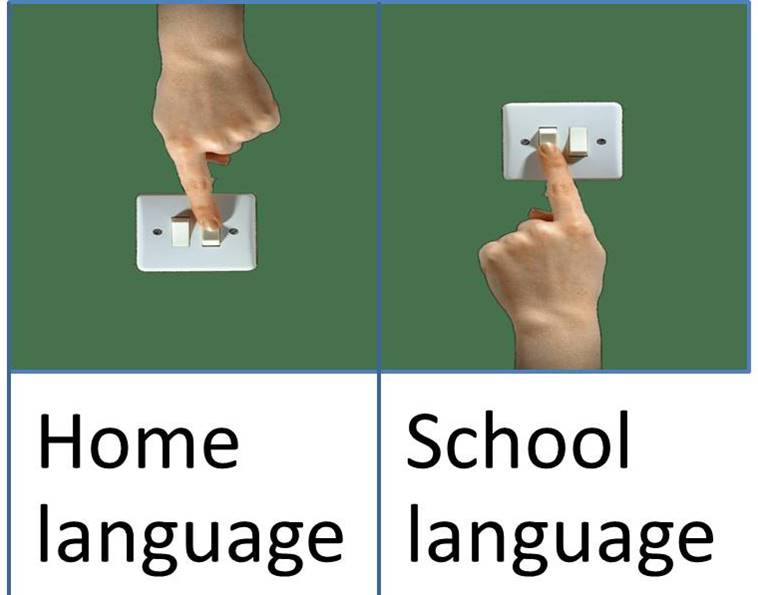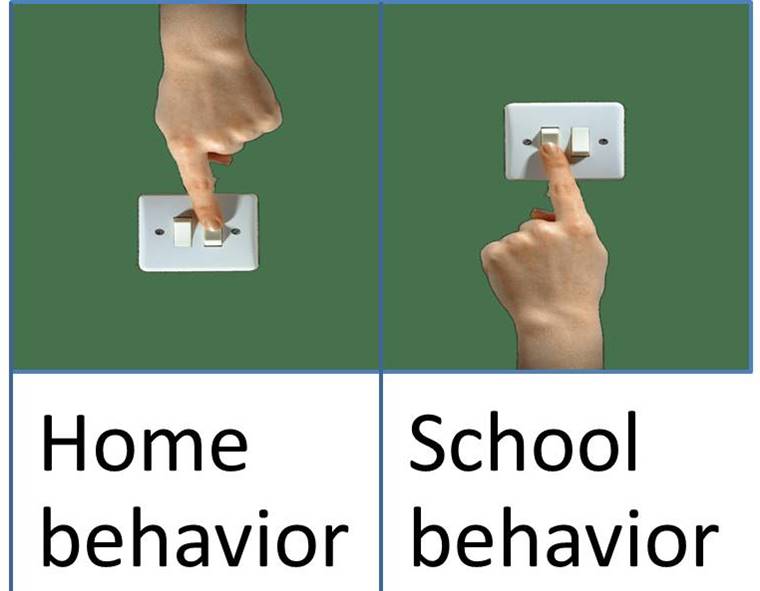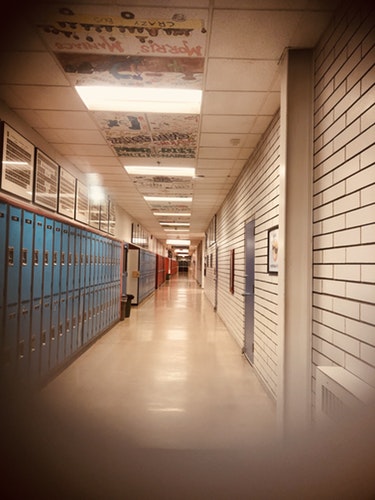When we work with children who use a dialect of English or who have a different home language, we teach those children to “code-switch”, changing from speaking in one’s home language in some circumstances and switching to another language in other circumstances. We do not penalize the child. We teach him/her when each language is appropriate.

The same principle is true for behavior.
Children come to school with many ideas about what is the best way to behave. What is okay at Mindy’s house may be not okay at Henry’s house. When these children do things that are not appropriate for school, we can blame the parents and deplore the behavior, or we can plan how to teach children what is acceptable at school.
When I was a principal, an eight year old boy was sent to my office. I was on the phone, but he stormed in and threw himself into the visitor’s chair. He began talking before I finished my phone conversation. When I hung up, I interrupted him and said, “Charlie, I am going to show you the school way to come to my office.” I showed him how to knock on the door frame and to wait until I said, “Come in.” Then I had him practice doing that. At first I stood by him and praised what he did right and then corrected any mistakes. When he had that down pretty well, I sat at my desk and had him try the behavior on his own. We high fived when he got it right. Only then did I ask him why he was sent to the office.
The school counselor watched this with her mouth hanging open. Later she told me that most of the teachers had given up on Charlie, believing he would never behave in the way they expected.
Charlie was sent to the office many times during that school year, but he never forgot how to ask permission to come into the office.
I offer this story to show that kids can be taught exactly what to do in “the school way”. Phrasing it in these terms takes away the idea that what children do at home is wrong and what we do at school is right. That just makes children confused and parents alienated from the school system. Instead we need to say It is just a different way to behave in a certain situation. In other words, we are teaching the children to “code-switch” between a place where X behavior is appropriate and a place where Y behavior is expected.

It is difficult to do this at the end of the school year, but we can plan to teach children to code-switch their behavior at the beginning of the next school year. Here is what to do:
- Make a list of the behaviors children seemed to have difficulty with in previous years and what you would rather the children do.
- Prioritize the list. What behaviors are the most important ones? By prioritizing your list, you will know what behavior procedures you need to teach in the first few days of school and which can be taught later on.
- Decide when to teach the behavior. Something that is of paramount importance to you might need to be taught before you begin the process of handing out books or other beginning of the school year activities.
- Decide how to teach the behavior. If you can teach the behavior in the context
of a subject area lesson, more power to you!
- Explain the behavior.
- Model the behavior. You may choose to first model a non-example. If you do, model the expected behavior, then the non-example, then the expected behavior again.
- Have students practice the behavior.
- Reinforce verbally.
- Repeat steps A-D as needed.
- Remember to re-teach the expected behaviors regularly during the first couple of weeks. Plan to remind students of the expected behavior after a long weekend or a school holiday.
Teaching children to code-switch their behavior between “home behavior” and “school behavior” saves wear and tear on our nerves. The time we spend on teaching those behaviors up-front saves our stress level as the year goes on. In addition, it helps kids understand what to do in a given situation at school instead of just telling them they are wrong. Learning to “code-switch” behavior is a life skill worth cultivating.






